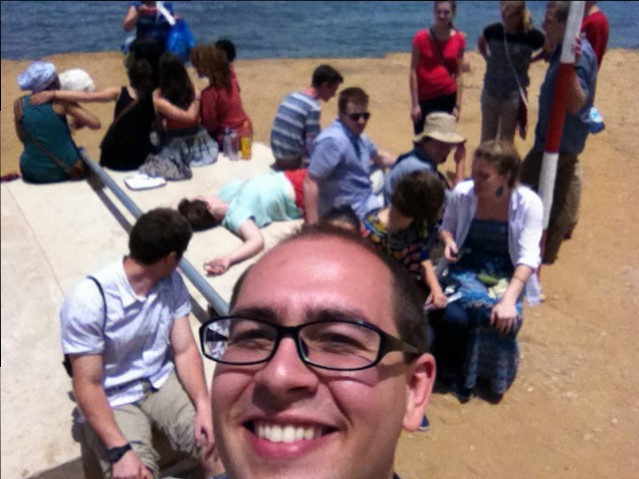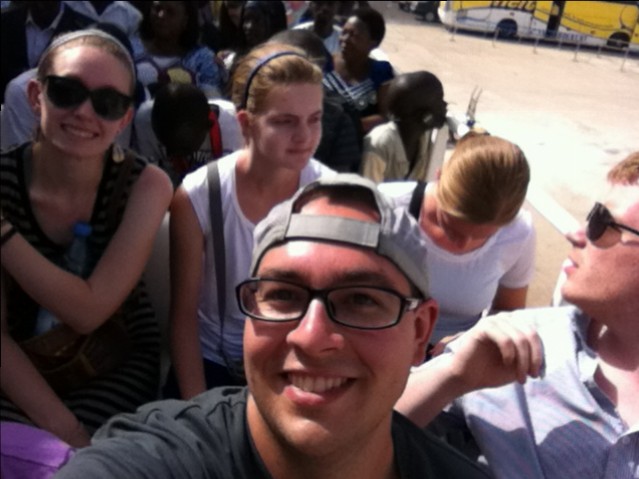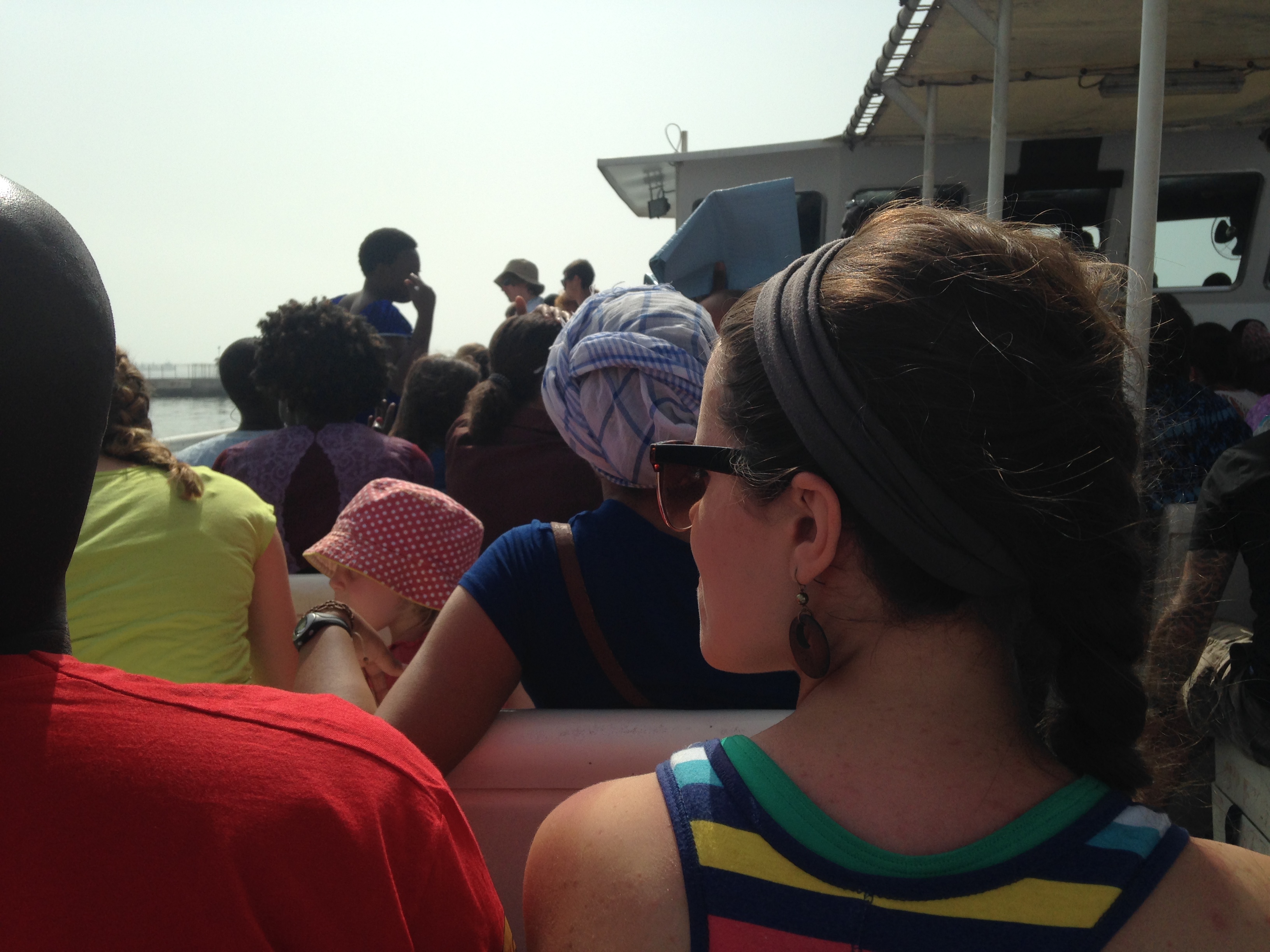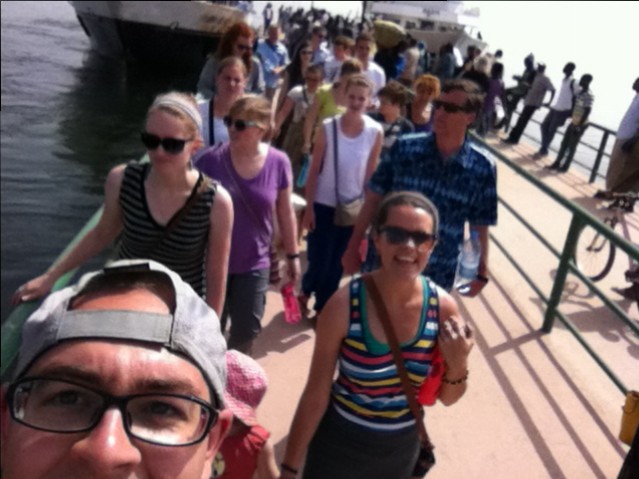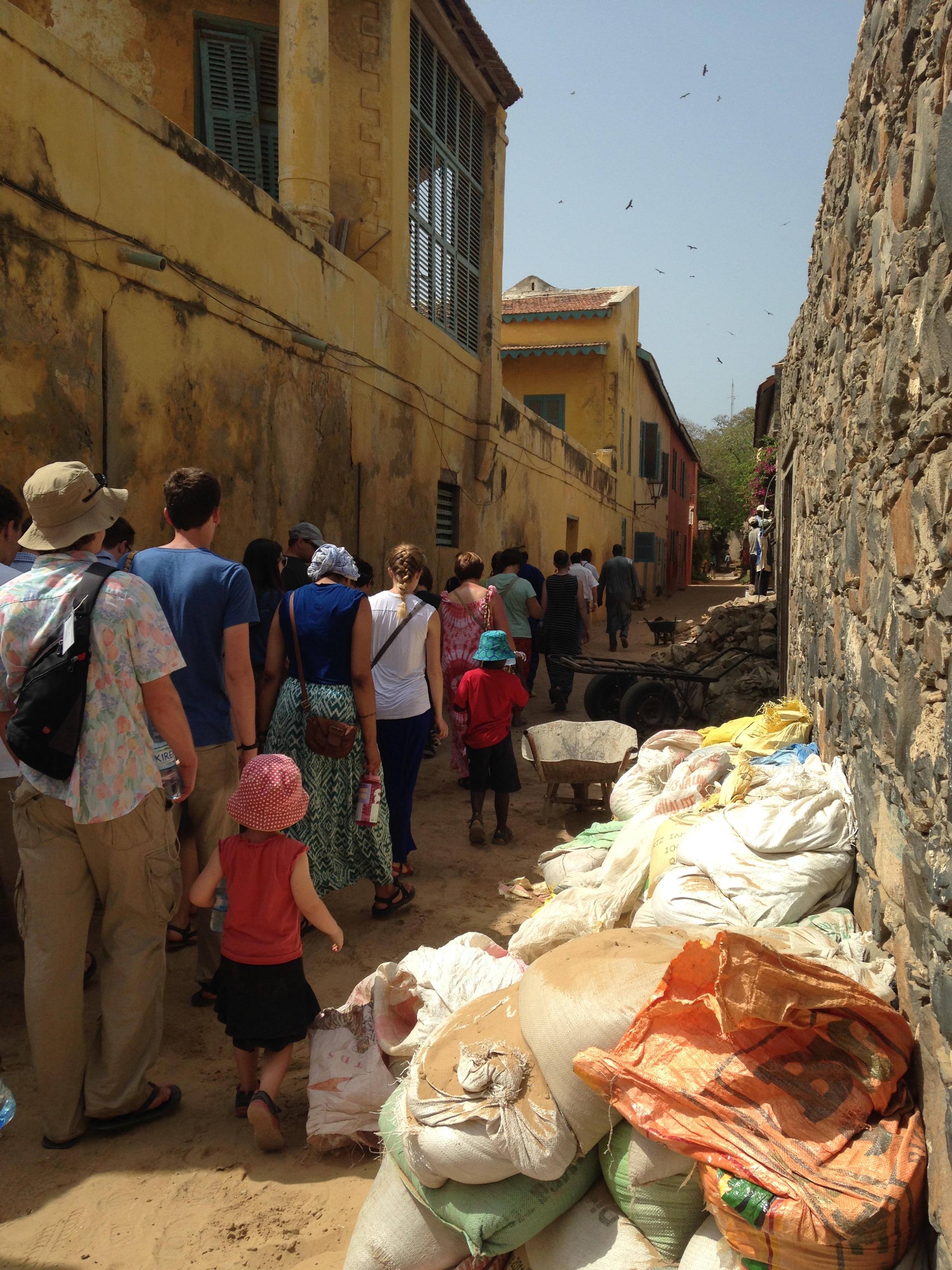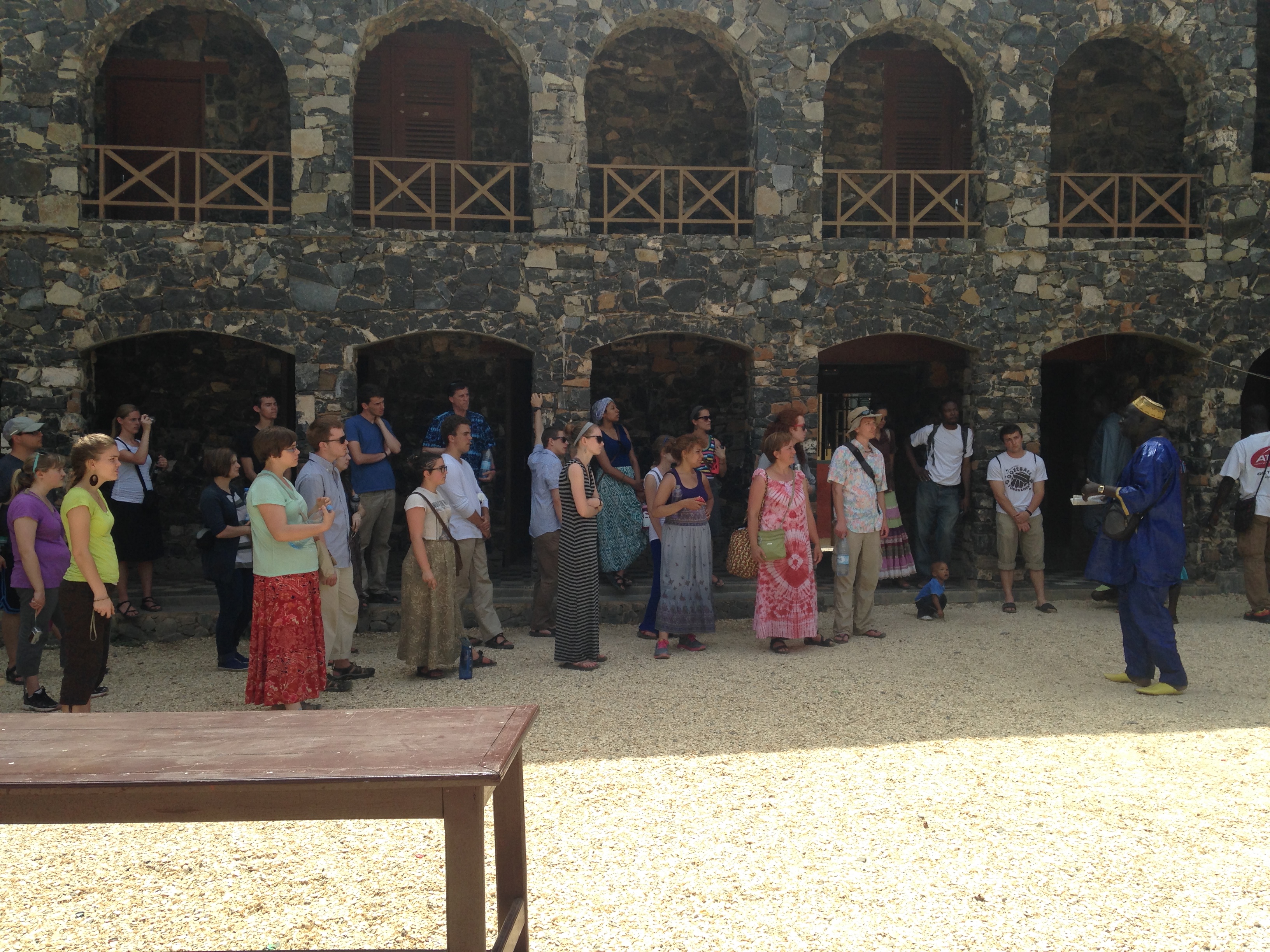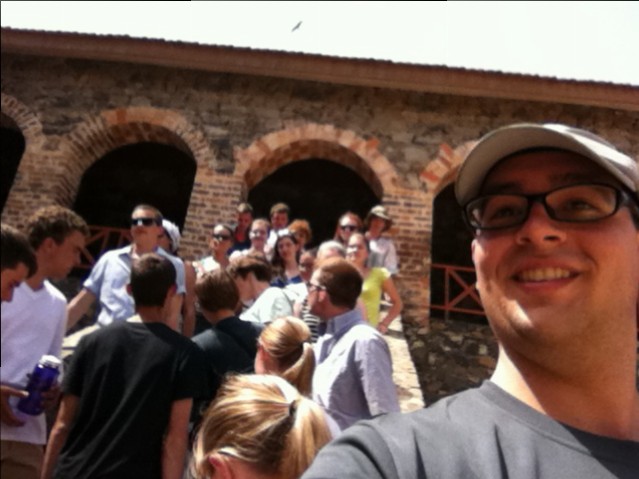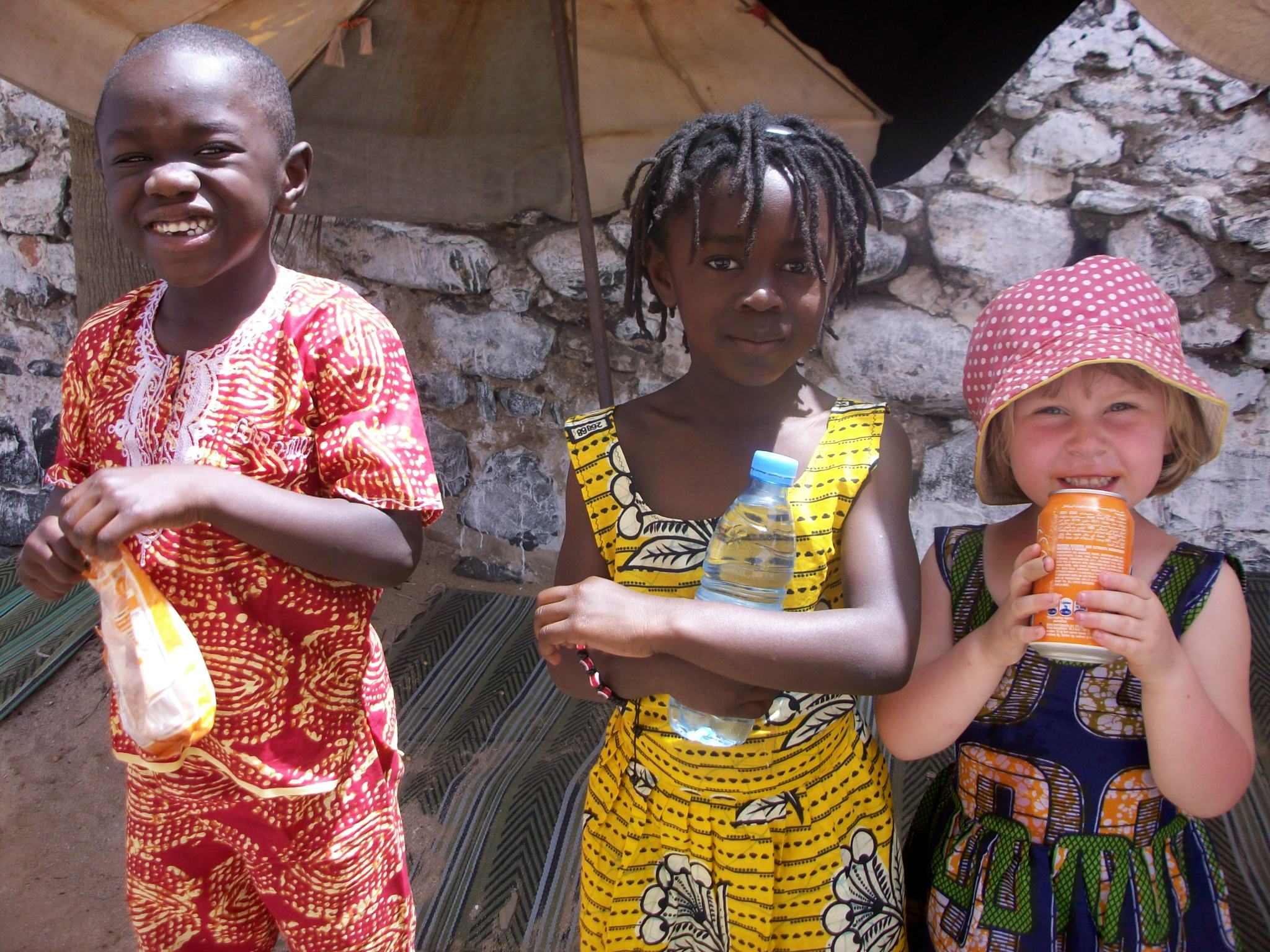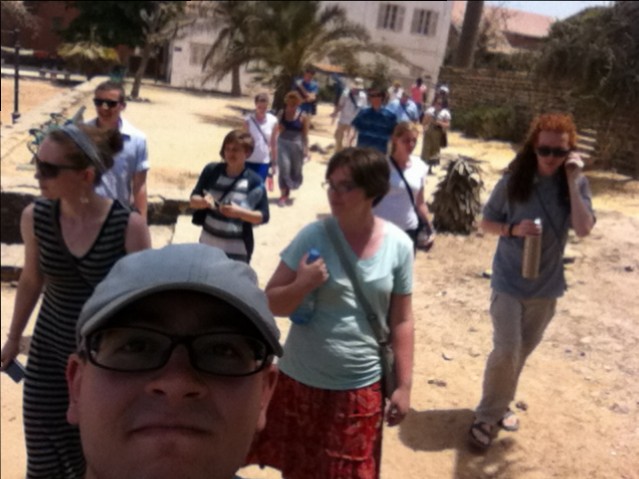Gorée Island
On the 15th and 16th of May, we traveled to Dakar to visit Gorée Island and learn more about the impact of slavery both domestically, in Senegal, and in terms of the role that memorials like Gorée Island play for the African Diaspora and other inheritors of the colonial legacy. On Thursday we met with Ibrahima Thiaw in his archaeologylaboratory at the University of Dakar. He is Professor of Archaeology at IFAN, a research institute at the University Cheikh Anta Diop of Dakar, Senegal, where he directs both the Archaeology Laboratory and the Musée Théodore Monod d’Art africain. On Friday we took the ferry to Gorée Island. Gorée Island is a UNESCO World Heritage Site. Quoting from the UNESCO site, “From the 15th to the 19th century, it was the largest slave-trading centre on the African coast. Ruled in succession by the Portuguese, Dutch, English and French, its architecture is characterized by the contrast between the grim slave-quarters and the elegant houses of the slave traders. Today it continues to serve as a reminder of human exploitation and as a sanctuary for reconciliation.”

